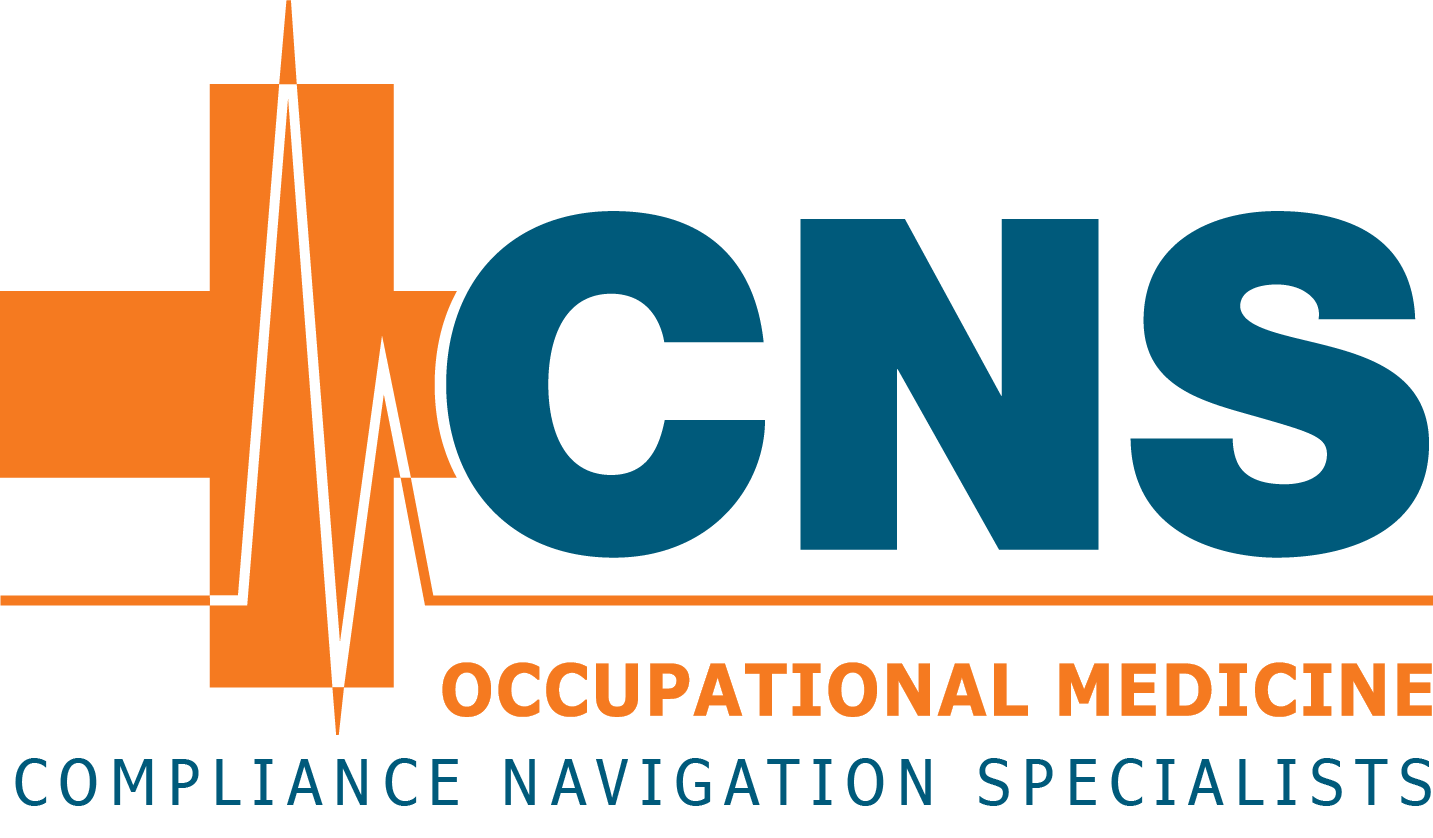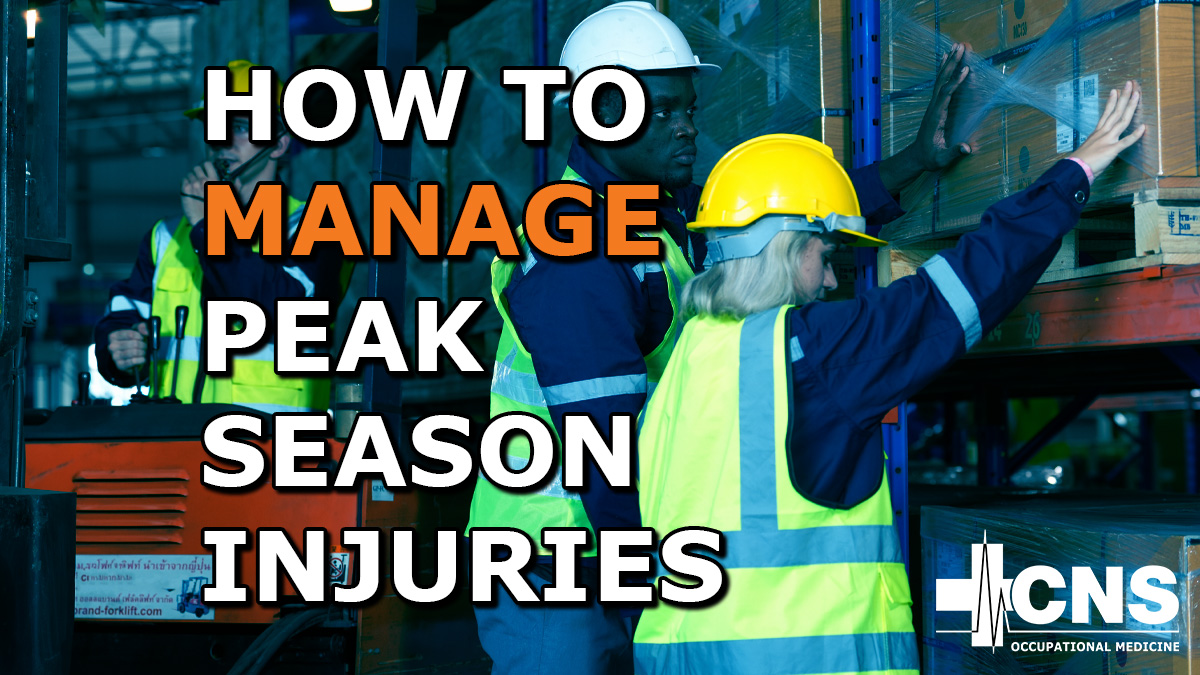With the year-end peak season driving a surge in activity, many companies experience heightened risks of workplace injuries.
The fast pace, heavy lifting, and long hours increase the likelihood of muscle strains, sprains, and fatigue-related accidents—especially for delivery drivers, warehouse workers, and those in high-demand roles.
Employers and employees can take proactive steps to minimize these risks and maintain a safe, productive work environment during this busy period.
Are you ready this year?
Common Peak Season Injury Risks
During the Q4 peak season, such as the Amazon deal rush, employers often see an increase in:
- Slips, trips, and falls on cluttered walkways, wet floors, or crowded warehouse spaces.
- Shoulder and back strains from repetitive lifting of heavy packages or improper body mechanics.
- Fatigue-related incidents due to extended shifts, tight deadlines, and insufficient rest.
- Vehicle accidents during high-pressure delivery schedules in congested traffic.
- Repetitive stress injuries from rapid, repetitive tasks or overuse of equipment. Without proper management, minor incidents can escalate into long-term disability claims, impacting both workers and businesses.
Even small incidents can escalate into long-term disability claims if not managed properly. That’s why early injury intervention and objective medical evaluations are critical.
How Employers Can Manage Peak Season Injury Risks
Don’t let another season go by where you are not prepared for these risks.
Proactive safety measures and early intervention are key to reducing workers’ compensation claims during peak season. Here’s how employers can prepare:
1. Prioritize Fit-for-Duty and Post-Injury Evaluations
Before peak season begins, schedule fit-for-duty exams for employees in high-risk roles to ensure they can safely perform essential job functions, particularly those with prior injuries.
After an injury, prompt medical assessments help determine the severity and whether modified duty is feasible.
Goal: Prevent minor strains from becoming costly lost-time claims.
Tip: Partner with occupational health providers for same-day injury care and return-to-work evaluations to minimize downtime.
Related: Beards and OSHA Respirator Fit Testing: What You Need to Know
2. Use Independent Medical Exams (IMEs) to Validate Claims
Peak season often sees a rise in questionable claims, such as soft tissue injuries or unreported incidents. An Independent Medical Exam (IME) by a board-certified physician provides an objective opinion on claim validity, disability level, and readiness to return to work.
IMEs are critical when:
- There’s a discrepancy between the treating provider and insurer findings.
- Symptoms don’t align with objective evidence.
- There’s suspicion of exaggeration or fraud.
With workers’ comp fraud costing employers billions annually, IMEs ensure fair and accurate claim resolution.
With the rise in workers’ comp fraud nationally—estimated to cost employers over $35 billion annually—objective medical reviews are essential for defending legitimate claims.
3. Implement Safety and Wellness Measures
Prevent injuries with proactive strategies:
- Clear pathways: Regularly inspect and clear walkways of clutter, spills, or obstacles. Install mirrors at aisle ends to reduce collisions.
- Provide ergonomic equipment: Use dollies, carts, conveyors, and mechanical lifts to minimize manual lifting. Supply lightweight, ergonomically designed tools.
- Set realistic standards: Avoid overly aggressive production goals that push workers to rush unsafely. Allow flexible pacing to reduce errors.
- Promote warm-ups: Encourage pre-shift stretching to prepare muscles for repetitive tasks.
- Train for safety: Provide refresher courses on proper lifting, equipment use, and safe driving during high-traffic periods.
4. Coordinate With Occupational Health Experts
A robust workers’ comp program relies on collaboration. Partner with occupational health professionals to ensure:
- Accurate medical documentation for claims.
- Objective IMEs and return-to-work decisions.
- Drug and alcohol testing post-incident, if required.
- Clear communication between HR, insurers, and providers.
Custom injury management programs, including pre-employment exams, injury care, and DOT physicals, keep your workforce safe and compliant during peak season.
5. Manage Staffing and Scheduling
- Rotate tasks: Alternate between heavy and light duties to prevent repetitive strain and fatigue.
- Ensure adequate staffing: Hire seasonal workers to avoid overworking employees, as overtime is a major cause of accidents.
- Mandate breaks: Enforce regular rest breaks to combat fatigue, following OSHA guidelines for work-rest cycles during intense workloads.
6. Foster a Culture of Safety
- Provide thorough training: Offer refresher courses on lifting techniques, equipment use, and emergency protocols. Gradually acclimate new or seasonal workers with increasing workloads.
- Encourage reporting: Create an environment where workers feel safe reporting hazards or fatigue without fear of retaliation.
- Form safety committees: Include employees and managers to proactively address workplace hazards.
Steps for Employees to Stay Safe
Employees play a critical role in preventing injuries by following safety protocols and managing their health during peak season.
1. Practice Proper Body Mechanics
- Lift correctly: Bend at the knees, keep your back straight, and hold loads close to your body to reduce strain.
- Avoid twisting: Pivot with your feet instead of twisting your torso to prevent back injuries.
- Use equipment: Rely on dollies, carts, or mechanical lifts for heavy or multiple items instead of carrying them manually.
2. Manage Fatigue and Stress
- Prioritize rest: Aim for 7–9 hours of sleep nightly to recover from demanding shifts. Take all assigned breaks to recharge.
- Stay hydrated and nourished: Drink water regularly to prevent dehydration and muscle cramps. Eat balanced meals and snacks to sustain energy.
- Stretch regularly: Perform warm-up stretches before shifts and brief stretches every 20–40 minutes to maintain flexibility and reduce muscle tension.
3. Be Aware of Your Surroundings
- Report hazards: Immediately flag unsafe conditions like spills, broken equipment, or cluttered walkways.
- Wear PPE: Always use required gear, such as safety shoes and high-visibility vests, to stay protected.
- Know your limits: Listen to your body and avoid overexertion. If you feel dizzy, tired, or in pain, take a break and report it.
Stay Ahead of Peak Season Injury Risks
The holiday rush doesn’t have to mean a surge in injuries. By investing in prevention, early intervention, and occupational health partnerships, employers can reduce claims, minimize downtime, and keep their workforce safe.
Employees can contribute by following safety protocols, using proper techniques, and prioritizing their health.
Need help managing peak season injuries or scheduling IMEs? Contact CNS Occupational Medicine to develop a proactive injury management strategy this season.
Contact our medical team to develop your custom plan at 800.551.9816 or info@cnsoccmed.com.




